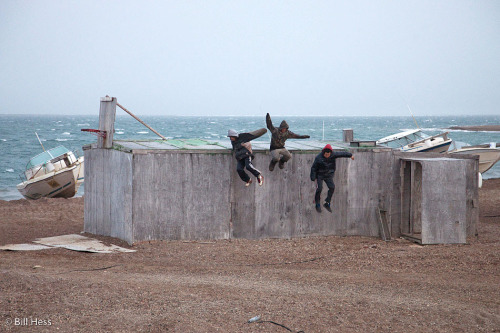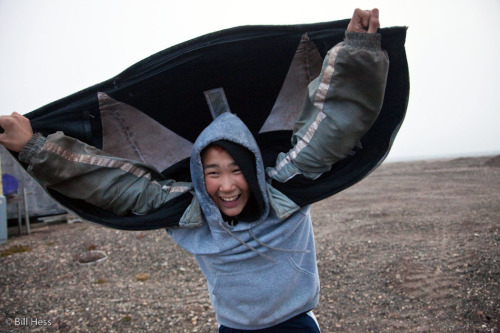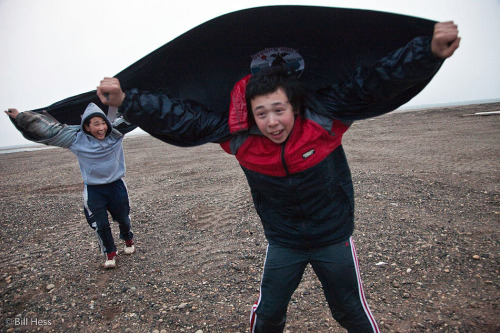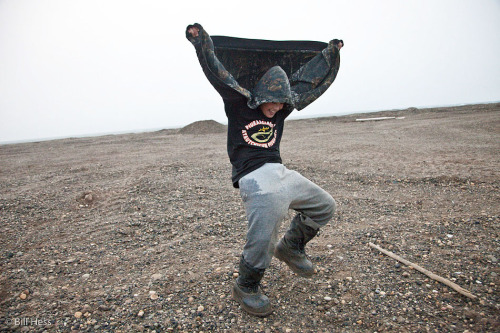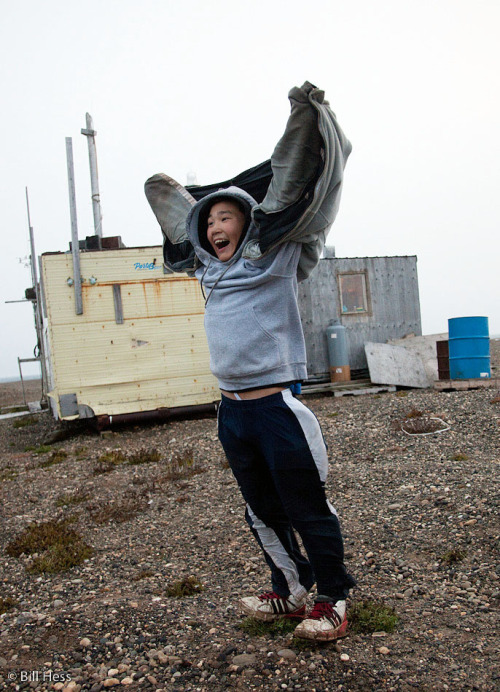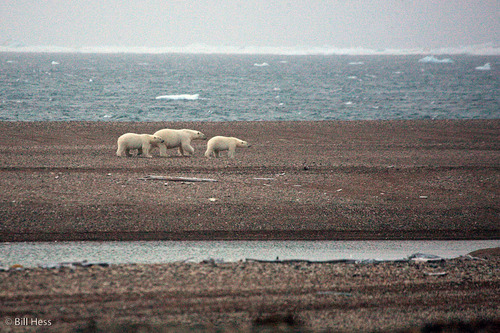Tikigaq: back out on the ice with two WEIO Olympic champions, I see my final whale for this Point Hope visit, but no polar bear
 Wednesday, June 15, 2011 at 10:37AM
Wednesday, June 15, 2011 at 10:37AM 
On my final full day in Point Hope this trip, I found Krystle tying braids into the hair of David Thomas. David has roots here, lives in Palmer, but comes back as often as he can to reconnect with his traditional way of life.
David is also a star at the World Eskimo-Indian Olympics, held each summer in Fairbanks. Last year, he won first place in the knuckle hop, the toe-kick, the one hand reach, the Alaska high kick, the blanket toss and also received the sportsmanship award.
Many readers probably do not know what those events are. It has been a long time since I have covered WEIO. In her comments to this blog, Annette Donaldson has been urging me to come up for WEIO and has pointed out that this summer will be the 50th anniversary of the games and so will be extra special.
If I can go to WEIO next month, I will show you those events. I have much going on this summer and a huge amount of work that I must complete and so cannot say for certain that I will be able to attend, but if it is feasible, then I will.
I will look forward to it with both excitement and dread.
Excitement to witness the games, the dances, the traditional clothing fashion displays, all the events and the protocol of strong sportsmanship, but dread at the thought of having to join in the media scrum and being forced to jostle about with all the other photographers and videographers who will be covering the event.
Even back in the 80's, when I used to attend WEIO regularly, before there was a camera in every phone, it could be a real battle and I remember some hard and sharp elbows. So I fear it will really be a media scrum this year.
Even if it is, a photographer at WEIO should be polite, calm and good tempered at all times - just like the athletes. Being polite and a good sport and even giving assistance and encouragement to those you compete against is part of WEIO tradition and protocol.

Later that afternoon, I followed Jesse Frankson Sr. and David back out to the lead. Jesse is also a WEIO star and holds the world record in the one-foot high kick (Canadian style) - 9'10". the one-hand reach - 8'10" and the kneel jump - 63 1/4 inches.
So here I was, on the ice, with two of Alaska's most famous Native Olympic stars - right here on the ice of Tikigaq - where many of the games were born.

Jesse and David had come out earlier in the day and had happened upon a huge polar bear. David had watched in amazement as Jesse and the bear had spent some time studying each other while being separated only by about 15 feet.
We hoped that we might find that bear this trip as well.
The lead had still been open when Jesse and David had been out earlier, and so they also had hoped they might catch a beluga.
When we got there, the lead was closing fast. This bowhead swam through a mix of newly freezing slush ice and ice that was traveling in on the southwest wind.

Soon, the lead was completely closed. Yes, this is the very same stretch of sea pictured in past posts with belugas and bowheads swimming through it, with an umiak traveling through wide-open seas.
That is how fast it can change.
And when it gets like this, the hunt shuts down and the hunters must wait for the water to open again.

We meandered a bit on the return to the village, hoping to find the big bear. We did not find it, but we did find this raven perched atop a peak of pressure-ridge ice.

Jesse and Krystle, preparing meal-sized portions of their share of this spring's maktak for freezing.


























































